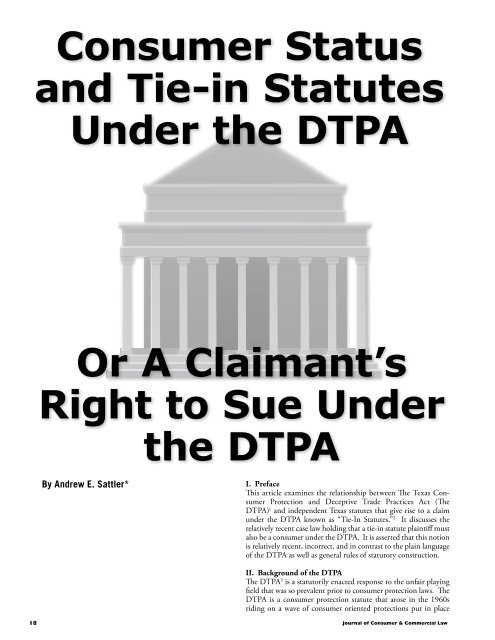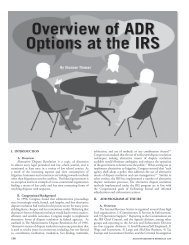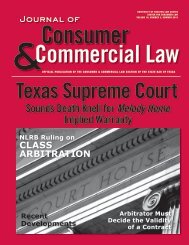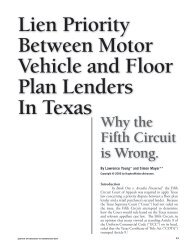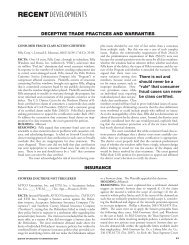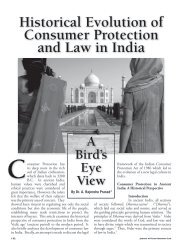Teaching Consumer Credit Law in an Evolving Australian Economy
Teaching Consumer Credit Law in an Evolving Australian Economy
Teaching Consumer Credit Law in an Evolving Australian Economy
You also want an ePaper? Increase the reach of your titles
YUMPU automatically turns print PDFs into web optimized ePapers that Google loves.
<strong>Consumer</strong> Status<br />
<strong>an</strong>d Tie-<strong>in</strong> Statutes<br />
Under the DTPA<br />
Or A Claim<strong>an</strong>t’s<br />
Right to Sue Under<br />
the DTPA<br />
By Andrew E. Sattler*<br />
I. Preface<br />
This article exam<strong>in</strong>es the relationship between The Texas <strong>Consumer</strong><br />
Protection <strong>an</strong>d Deceptive Trade Practices Act (The<br />
DTPA) 1 <strong>an</strong>d <strong>in</strong>dependent Texas statutes that give rise to a claim<br />
under the DTPA known as “Tie-In Statutes.” 2 It discusses the<br />
relatively recent case law hold<strong>in</strong>g that a tie-<strong>in</strong> statute pla<strong>in</strong>tiff must<br />
also be a consumer under the DTPA. It is asserted that this notion<br />
is relatively recent, <strong>in</strong>correct, <strong>an</strong>d <strong>in</strong> contrast to the pla<strong>in</strong> l<strong>an</strong>guage<br />
of the DTPA as well as general rules of statutory construction.<br />
II. Background of the DTPA<br />
The DTPA 3 is a statutorily enacted response to the unfair play<strong>in</strong>g<br />
field that was so prevalent prior to consumer protection laws. The<br />
DTPA is a consumer protection statute that arose <strong>in</strong> the 1960s<br />
rid<strong>in</strong>g on a wave of consumer oriented protections put <strong>in</strong> place<br />
18 Journal of <strong>Consumer</strong> & Commercial <strong>Law</strong>


